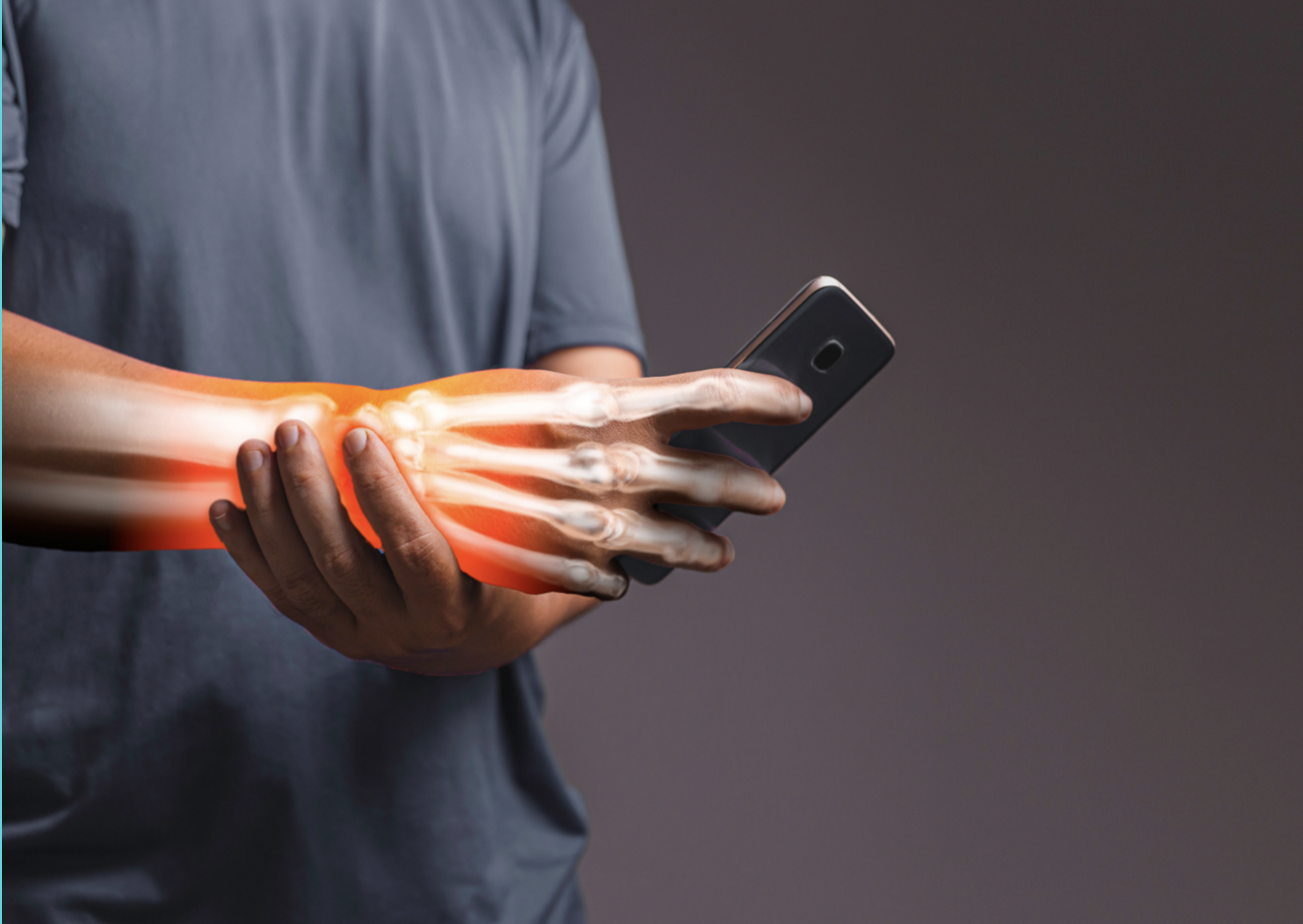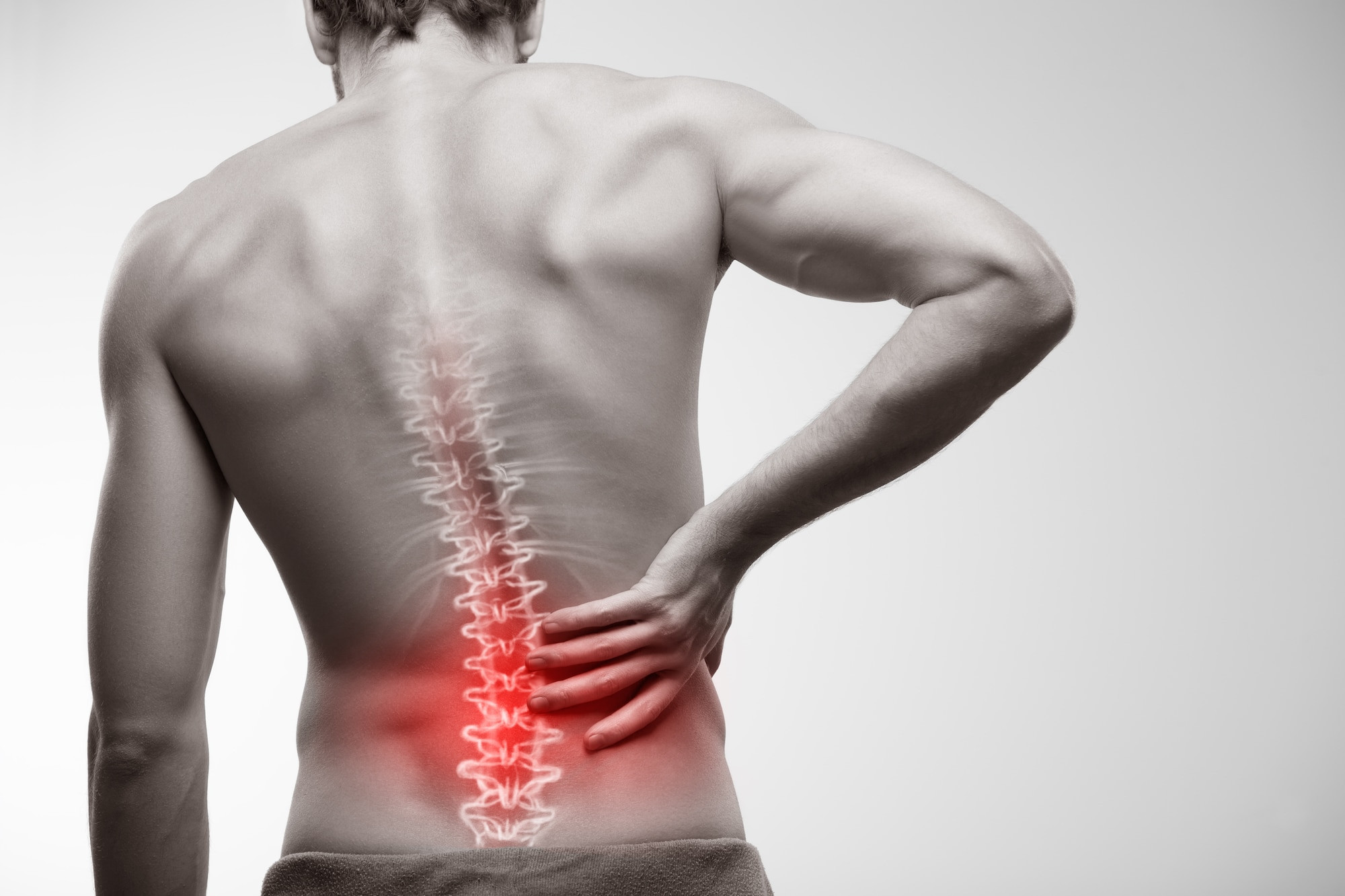Definisi
Carpal tunnel syndrome (CTS) merupakan kondisi yang sering dialami oleh usia produktif yang melakukan pekerjaan yang menggunakan tangan seperti mengetik, menulis, dan menjahit. CTS merupakan kondisi yang disebabkan oleh tertekannya saraf medianus (n. medianus). Carpal tunnel atau terowongan karpal merupakan sebuah rongga pada telapak tangan yang dikelilingi oleh tulang dan ligamen. Ketika saraf medianus mengalami kompresi atau terjepit, Anda akan merasakan gejala seperti sensasi kebas, kelemahan, dan nyeri pada tangan dan lengan.
Kondisi ini dipengaruhi oleh susunan anatomi tangan, masalah kesehatan, dan gerakan pada tangan yang bersifat repetitif atau berulang. Penanganan yang tepat dapat mengurangi rasa kebas pada tangan dan mengembalikan fungsi pergelangan tangan sehingga Anda dapat bekerja seperti semula.
Penyebab
CTS disebabkan oleh penekanan pada saraf medianus (n. medianus). Saraf medianus merupakan saraf yang mempersarafi tangan Anda, sehingga Anda dapat merasakan sentuhan pada jempol dan jari-jari sisi telapak tangan Anda. Saraf ini juga berfungsi untuk memberikan sinyal pada otot agar menggerakkan jempol tangan Anda. Saraf medianus berasal dari pleksus brachialis pada lengan atas dan berjalan menunju tangan melalui pergelangan tangan. Pada perjalanannya, saraf ini akan melewati sebuah terowongan yang disebut terowongan karpal. Apapun yang dapat menekan, menjepit, atau mengiritasi terowongan karpal juga dapat mengiritasi saraf medianus. Hal-hal yang bersifat repetitif atau berulang, seperti gerakan mengetik, menulis, menjahit dapat menekan terowongan karpal tersebut. Jika tidak ditangani, saraf medianus dapat mengalami penekanan dan menimbulkan gejala seperti nyeri, kebas, dan kelemahan pada tangan. Hal ini disebut sebagai CTS.
Selain gerakan berulang, patah tulang pada tulang-tulang pergelangan tangan dapat mempersempit terowongan karpal dan mengiritasi saraf medianus. Peradangan yang disebabkan oleh rheumatoid artritis juga dapat menyebabkan pembengkakan dan mengiritasi saraf medianus.
Faktor Risiko
Terdapat beberapa faktor risiko yang berhubungan dengan kondisi CTS. Walaupun beberapa faktor ini tidak secara langusng menyebabkan CTS, beberapa dapat meningkatkan risiko iritasi pada saraf medianus yang menyebabkan CTS pada kemudian hari. Faktor-faktor tersebut antara lain:
- Pekerjaan. Bekerja dengan gerakan berulang seperti mengetik, menjahit, kasir, musisi, penata rambut dapat menyebabkan iritasi pada saraf medianus. Hal ini terutama terjadi jika posisi tangan Anda lebih rendah dibandingkan posisi pergelangan tangan Anda. Bekerja dengan alat yang bergetar dan bekerja pada ruangan dingin juga dapat meningkatkan risiko mengalami CTS.
- Faktor Anatomi. Cedera yang menyebabkan patah tulang pergelangan tangan, dislokasi (tulang bergeser tidak pada tempatnya), atau artritis yang merusak tulang-tulang kecil pada pergelangan tangan dapat mengubah terowongan karpal. Hal ini dapat mengiritasi dan menekan saraf medianus. Namun, terdapat beberapa orang yang memiliki rongga terowongan karpal yang lebih kecil sehingga memiliki risiko lebih tinggi untuk mengalami CTS.
- Jenis Kelamin. Perempuan lebih sering mengalami CTS dibandingkan laki-laki. Hal ini disebabkan oleh ruang terowongan karpal yang lebih kecil pada perempuan dibandingkan laki-laki.
- Kondisi yang merusak saraf. Beberapa penyakit kronis seperti diabetes dapat meningkatkan risiko terjadinya kerusakan saraf, termasuk pada saraf medianus.
- Kondisi Peradangan. Kondisi seperti rheumatoid artritis dan beberapa kondisi lain yang menyebabkan tubuh mengalami proses peradangan secara terus menerus dapat memengaruhi lapisan tendon (jaringan penghubung tulang dan otot) pada pergelangan tangan. Hal ini dapat memengaruhi terowongan karpal dan menekan saraf medianus.
- Pengobatan. Beberapa studi menunjukkan adanya hubungan antara CTS dan penggunaan obat untuk mengobati kanker payudara.
- Obesitas. Mengalami obesitas merupakan faktor risiko dari CTS.
- Kehamilan
Beberapa penelitian menunjukkan penggunaan mouse, dan bukan penggunaan keyboard dapat meningkatkan risiko seseorang mengalami CTS. Namun, belum ada bukti yang cukup mengenai hal ini.
Gejala
Beberapa gejala yang dapat Anda rasakan jika Anda mengalami CTS adalah:
- Kebas dan sensasi tertusuk-tusuk. Anda akan merasakan kebas dan sensasi tertusuk-tusuk pada daerah tangan dan jari-jari. Umumnya sensasi tersebut dirasakan pada jari jempol dan telunjuk, kadang juga dirasakan pada jari tengah dan jari manis, namun bukan jari kelingking. Sensasi tersebut dapat menjalar ke lengan atas. Gejala-gejala ini umumnya muncul ketika Anda sedang menyetir mobil, menggenggam gawai, memegang koran, atau posisi tangan yang menetap. Beberapa orang dapat mengurangi sensasi tidak nyaman tersebut dengan mengibaskan tangannya. Sensasi kebas dan sensasi tertusuk-tusuk dapat menjadi konstan untuk beberapa waktu.
- Kelemahan. Anda dapat merasakan tangan yang mengalami CTS menjadi lebih lemah. Anda mungkin menyadari hal ini karena sering menjatuhkan benda-benda yang Anda pegang. Hal ini disebabkan oleh perasaan kebas, sensasi nyeri tertusuk-tusuk atau disebabkan oleh otot yang dipersarafi oleh saraf medianus mengalami kelemahan.
Diagnosis
Dokter akan melakukan beberapa pemeriksaan, antara lain:
- Anamnesis. Dokter akan menanyakan beberapa pertanyaan mengenai keluhan yang Anda alami, pola nyeri yang terjadi, riwayat keluarga dengan keluhan yang sama, kondisi medis lain yang Anda miliki, pekerjaan atau aktivitas sehari-hari Anda. Karena saraf medianus tidak memeprsarafi kelingking, Anda dapat mengalami nyeri pada semua jari, kecuali kelingking. Sensasi tidak nyaman tersebut umumnya muncul ketika Anda sedang menggenggam gawai, memegang setir, dan memegang koran. Anda juga dapat terbangun pada malam hari karena nyeri tersebut.
- Pemeriksaan fisik. Pada pemeriksaan fisik dokter akan melakukan beberapa gerakan dan menanyakan apakah gerakan-gerakan tersebut menyebabkan nyeri pada pergelangan tangan Anda. Pemeriksaan yang sering dilakukan adalah Tinel's sign di mana dokter akan menyetuh atau mengetuk pergelangan tangan Anda dan phalen's maneuver di mana dokter akan meminta Anda untuk menekukkan kedua pergelangan tangan ke bawah selama beberapa menit. Untuk pemeriksaan sensasi, dokter dapat melakukan pemeriksaan diskriminasi dua titik.
- X-ray. Beberapa dokter dapat meminta foto x-ray tangan Anda untuk menyingkirkan penyebab lain dari nyeri, seperti patah tulang atau artritis.
- Elektromiografi. Alat ini bertujuan utnuk mengukur listrik yang dihasilkan oleh otot. Selama pemeriksaan ini, dokter akan memasukkan elektroda seukuran jarum untuk mengevaluasi aktivitas listrik pada otot secara spesifik ketika kontraksi dan instirahat. Pemeriksaan ini dapat mengidentifikasi jenis kerusakan otot yang dipersarafi oleh saraf medianus.
- Nerve conduction study. Merupakan variasi dari elektromiografi utnuk melihat aktivitas listrik pada otot.
Tata Laksana
Pengobatan CTS dapat dimulai sesegera mungkin setelah gejala muncul.
- Splinting. Memasang splint atau bidai pada pergelangan tangan ketika Anda tidur dapat mengurangi gejala yang menurunkan kualitas tidur Anda. Sekalipun Anda hanya menggunakan splint ketika malam hari, hal ini dapat tetap mengurangi gejala.
- Antinyeri. Penggunaan antinyeri seperti parasetamol dan ibuprofen dapat mengurangi nyeri untuk sementara waktu, namun obat ini tidak dapat menyembuhkan CTS.
- Kortikosteroid. Dokter dapat menyuntikkan kortikosteroid pada pergelangan tangan Anda untuk mengurangi peradangan dan pembengkakan sehingga mengurangi penekanan pada saraf medianus. Konsultasikan pilihan ini pada Dokter Anda.
- Operasi. Jika gejala tidak membaik dengan pilihan di atas, maka dokter dapat memberikan pilihan untuk melakukan operasi secara endoskopi maupun open surgery (pembedahan). Diskusikan manfaat dan risiko dari prosedur ini dengan dokter Anda.
Perawatan Diri di Rumah
Selain pilihan di atas, Anda juga dapat melakukan hal-hal di bawah ini untuk mengurangi nyeri akibat CTS, antara lain:
- Yoga bertujuan untuk memperkuat anggota gerak atas Anda sehingga dapat mengurangi nyeri
- Lakukan istirahat dari pekerjaan yang menggunakan tangan secara periodik/terus-menerus
- Kontrol berat badan Anda jika Anda memiliki berat badan berlebih
- Putar pergelangan tangan Anda dan lakukan peregangan pada tangan
- Konsumsi antinyeri jika diperlukan
- Jangan menindih tangan saat tidur
- Gunakan splint yang dapat Anda beli di apotek terdekat
Komplikasi
Komplikasi jarang terjadi, namun CTS dapat menyebabkan kehilangan fungsi pergerakan tangan secara signifikan. Maka dari itu, penanganan segera CTS dapat memperbaiki kualitas hidup penderitanya.
Pencegahan
Belum ada langkah dan strategi yang dapat mencegah CTS, namun Anda dapat mengurangi stres pada tangan dan pergelangan tangan Anda dengan beberapa langkah berikut:
- Kurangi Tekanan dan Lemaskan Gerakan Tangan Anda. Pada kondisi pekerjaan yang membutuhkan gerakan tangan secara repetitif, seperti mengetik, usahakan tidak mengetik terlalu keras. Tekan keyboard Anda dengan lebih perlahan. Untuk pekerjaan menulis dalam jangka waktu lama, gunakan pena yang besar dengan grip lembut. Pilih pena yang memiliki free-flowing ink sehingga Anda tidak perlu menekan dan memberikan beban lebih pada tangan Anda ketika menulis.
- Istirahat. Beristirahat lah beberapa kali setelah melakukan pekerjaan. Lakukan peregangan pada tangan Anda secara berkala. Hal ini penting terutama jika Anda bekerja menggunakan alat-alat yang membutuhkan tenaga besar.
- Perhatikan Posisi Anda. Hindari menekuk pergelangan tangan secara terus-menerus baik ke atas maupun ke bawah. Posisikan tangan Anda senyaman mungkin. Tempatkan keyboard Anda sejajar dengan siku atau lebih rendah.
- Ubah mouse Anda. Gunakan mouse yang nyaman.
- Pastikan tangan Anda hangat. Anda memiliki risiko lebih tinggi untuk mengalami nyeri dan kekakuan jika Anda bekerja di lingkungan yang dingin.
Kapan harus ke dokter?
Periksakan diri Anda ke fasilitas kesehatan terdekat jika Anda mengalami gejala-gejala seperti di atas dan jika kondisi CTS mengganggu produktivitas serta kualitas tidur Anda. Kerusakan permanen pada saraf dan otot dapat terjadi jika kondisi ini tidak ditangani dengan tepat.
Ingin mengetahui informasi seputar penyakit lainnya, silakan klik tautan ini ya!
- dr Nadia Opmalina
Mayo Clinic Staff. (2021). Carpal tunnel syndrome. MayoClinic. Retrieved from: https://www.mayoclinic.org/diseases-conditions/carpal-tunnel-syndrome/diagnosis-treatment/drc-20355608
Moore W. (2021). How Do You Treat Carpal Tunnel Syndrome. WebMD. Retrieved from: https://www.webmd.com/pain-management/carpal-tunnel/treat-carpal-tunnel-syndrome
Wipperman J. (2016). Carpal Tunnel Syndrome: Diagnosis and Management. Am Fam Physician, 94(12):993-999.
Santosa, K. B., Chung, K. C., & Waljee, J. F. (2015). Complications of compressive neuropathy: prevention and management strategies. Hand clinics, 31(2), 139–149. https://doi.org/10.1016/j.hcl.2015.01.012












